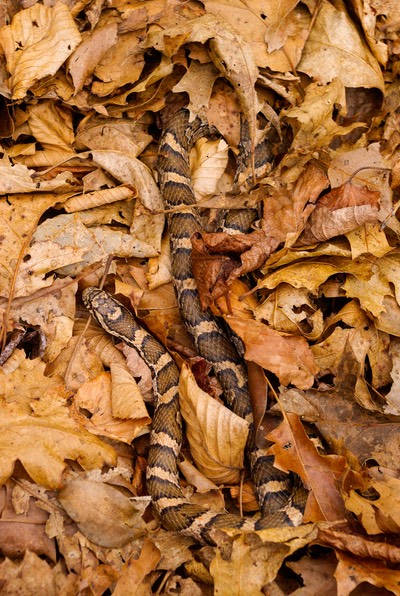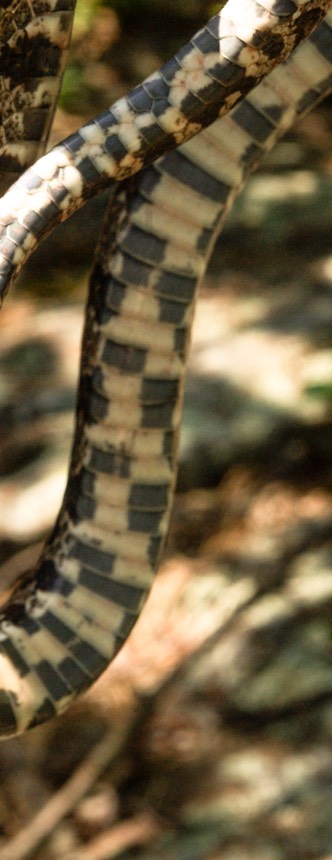
Milksnake adult
Perhaps the most persecuted snake in Western Massachusetts, the Milksnake is commonly mistaken for copperheads and other species that aren’t found anywhere near here. Since Milksnakes vibrate their tails vigorously when cornered, people have even mistaken them for timber rattlesnakes—silly if you look at the photos, but understandable to those who know little about snakes.
Milksnakes are powerful constrictors that feed on small mammals and other snakes. Some years ago in Hinsdale, Dave St. James made an unusual discovery. He found a young Milksnake that died (suffocated?) while in the process of eating an adult Red-bellied snake (which also was dead from the predation). The two, still together, are sitting in a jar of ethanol on my desk. A remarkable moment in time, captured and preserved.
Milksnakes and their eggs are often found in woodchip or compost piles. Presumably the heat from the decaying vegetation is more than ample for the developing embryos. Several snakes (most likely females) often gather here in late spring; dozens of eggs are frequently uncovered in mid summer—suggesting communal nesting. Of course, disturbance of these human-made egg incubators could spell the demise of an entire year’s cohort.

It appears that Milksnakes are diurnal mostly in spring and autumn while they are decidedly nocturnal during summer. I have seen them leaf basking on windy days where their color and pattern make them difficult to see and only rarely have I found them fully exposed on the surface.
Western Mass Milksnake populations are near the northern edge of a huge geographic range that extends well into South America. Throughout, there are widely different conditions of climate (precipitation and temperature), elevation, topography, and interactions with many other species. Milksnakes display an equally large variation in their size, pattern, and coloration. Especially intriguing are populations that mimic venomous coral snakes.
Batesian mimicry systems are familiar to every kid who studies monarch butterflies (though the viceroy is not an example of this kind—here’s the abstract). Snakes have also taken up the mimicry game, evolutionarily speaking. Read a detailed historical summary and discussion by Harry Greene and Roy McDiarmid or the more recent and equally fascinating discussion by David Pfennig and Sean Mullen.



